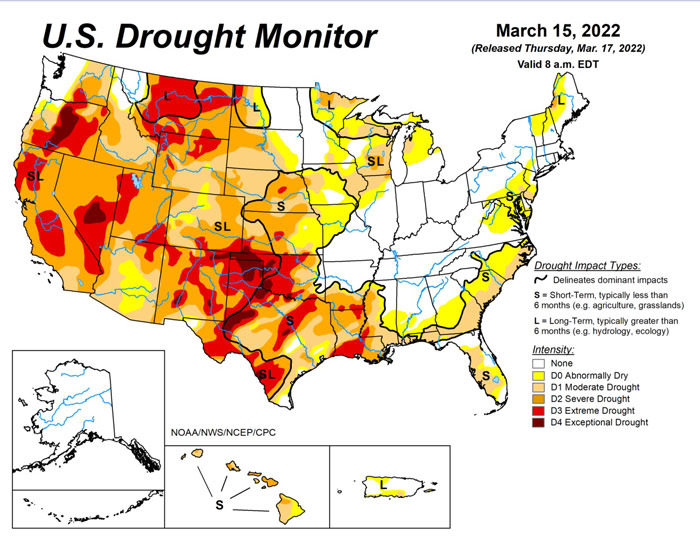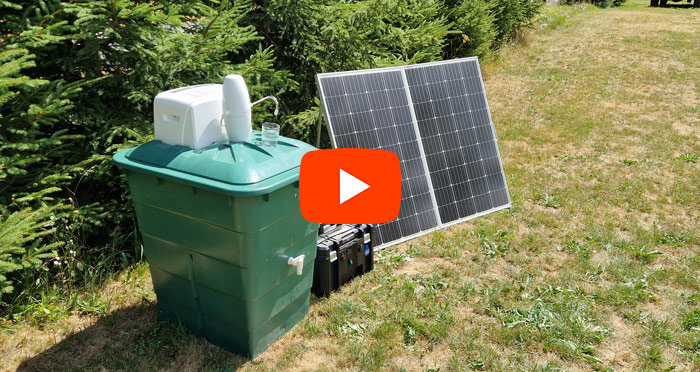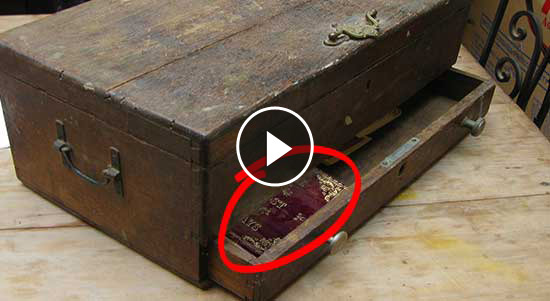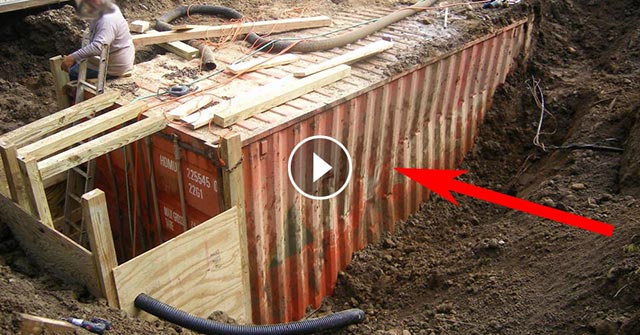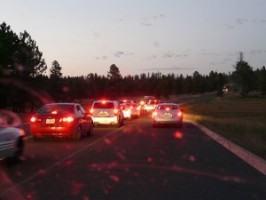Click Here To Join Our Telegram Channel for FREE daily tutorials!
Any number of short to long-term disasters could leave you without power and/or running water. The result is a serious but difficult topic in prepping: hygiene. Without running water, using your toilet becomes problematic. And showering or bathing is no longer a daily routine that is taken for granted. Without power, you won’t have hot water from the water heater for washing pots, pans, dishes, glasses, or for washing hands.
The ideal solution is to have a home with its own well, its own septic system, and a solar and/or wind source of off-grid power. Then you will be all set. The next best solution is to move in with someone who has that type of home and resources. If these two solutions don’t work for you, read on.
Suppose that you no longer have a source of running water or power. What are your options?
Fortunately, the typical toilet plumbing does not require electricity. It works by the force of water and gravity. What you do need, to flush the toilet without running water, is plenty of water (a few gallons at least) for each flush. The water need not be drinkable (i.e. potable), but you need about 5 gallons per person per day for flushing (about 1 flush per person per day). Some more efficient toilets might flush with less water, but you are always better off with more water.
What this means is that, in addition to your stored drinking water and some water purification equipment, you also need a source of non-drinkable (non-potable) water. You might collect some rainwater, using the rain spouts on your house. Be advised that collecting rainwater is actually illegal in some localities. There are some commercial products that capture water from rain gutters and store it in a large barrel (about 50 gallons). One of these on each side of the house is 100 gallons, but only about 20 flushes.
You could use water from a swimming pool. Or you might want to have a couple of very large water storage container, very large, kept outdoors for just such an eventuality. But the amount of water needed, say for a month or two without running water, gives you an idea of the scope of the problem.

If this type of situation continues long term, you are going to need another approach, but I’m not sure what will work. You could set up an outhouse, or any type of outdoor latrine. There are few other options. Running water is difficult to replace as a part of modern comfortable living. If you are without food, you can grow your own food. If you are without drinking water, you can purify the gallon or so of water you need each day. But without running water, long-term, your options are all not very good.
Bathing is another problem when you lack running water. The amount of water needed to shower or fill a bathtub to a shallow extent is at least 5 to 10 gallons. Washing with less water than that is undesirable. You also need water for washing your hands. You can use alcohol-based hand cleanser to a limited extent, to kill bacteria. Eventually, you need to actually wash off dirt and grime. So again the situation requires a substantial amount of water on a monthly basis if some disaster deprives you of running water. An AquaPod Kit holds about 65 gallons of water in your bathtub (in a plastic bag, essentially). But then you tub is unavailable for use in bathing/showering.
Camping supply stores often have outdoor showering devices that use a limited amount of water, and which could conceivably be used indoors, when you lack running water. I’ll mention a couple of these devices, but I have not tested or evaluated any of them.
Zodi Battery-Powered Shower — battery power means that you are not relying only on gravity to deliver a stream of water.
Stearns Outdoor SunShower 6.0 — this type of shower is ‘heated’ by the sun striking the black bag of water, meaning that the water is at best warm, but not really hot. It takes 3 hours in the sun, at least, to warm the water.
I’m omitting the more expensive devices, such as propane-powered showers with point-of-use water heating built-in. I’m skeptical that this type of device is worth the expense.

Another issue raised by a lack of running water is cleaning dishes and cooking utensils.This type of hygiene problem can endanger your health. If food containers and utensils are not cleaned thoroughly, they can grow bacteria. Your next meal could give you food poisoning, not due to the food, but due to the bacteria on improperly-cleaned containers and utensils. And if you don’t have the power to provide cooking heat, then your food will not be sterilized by cooking, worsening the problem.
The conclusion that I would draw from the above considerations, is that you cannot survive, with good health and a decent minimum standard of living, without either running water or a reliable source of large quantities of water.
My estimate of per person per day water needs, at a bare minimum:
1 gallon for drinking and cooking
5 gallons for flushing
10 gallons for bathing
5 gallons for cleaning cooking containers and utensils
Over the course of one month, this adds up to over 600 gallons of water per person. There is just no good way to store enough water for a family of four in order to cope with a medium or long-term disaster. If you are without town/city water for an indefinite period of time, you are in dire straits.
And this is another reason why rural living is ultimately the best preparation for long-term disaster scenarios. If you have a well, a septic system, and enough off-grid power to run the well pump and a few appliances/lights, you have a resource that is essentially unavailable to most suburbs and all cities. If you live in an apartment in a city, and you have no running water, you cannot stay in that location long-term. So if there is a long-term disaster that affects a large region, people will soon be forced to move away from the cities. There is not enough land to grow enough food in a city. There is not enough water for drinking or hygiene. Maybe you could survive in a suburb, a somewhat rural suburb. But I think you are better off in a more rural area.
By Thoreau
This Crazy Off Grid Device Literally Makes Drinkable Water From Fresh Air:
According to NASA, the U.S. is expecting a 100-YEAR LONG MEGADROUGHT.
It's already begun. Ask the farmers in California. They know.
Every survivalist knows that water is of critical importance. You NEED an independent water source that you can count on!
As an interesting "survival rehearsal" - imagine that you turned the tap on right now and nothing came out. How long would you last?
But what if there was another water source literally hidden in plain sight. That's right, I'm talking about the atmosphere!
The amazing thing about getting water from the natural moisture in the air... is that it is ALWAYS available.
This gives you real water security!
Learn more about how to tap into "Nature's secret water reservoir" and stay hydrated when TSHTF!
Watch the video:
😳 What Tinnitus Does To Your Brain Cells (And How To Stop It)
After 47 years of studies and countless brain scans done on more than 2,400 tinnitus patients, scientists at the MIT Institute found that in a shocking 96% of cases, tinnitus was actually shrinking their brain cells.
As it turns out, tinnitus and brain health are strongly linked.
Even more interesting: The reason why top army officials are not deaf after decades of hearing machine guns, bombs going off and helicopter noises…
Is because they are using something called "the wire method", a simple protocol inspired by a classified surgery on deaf people from the 1950s...

I Can't Help Showing This Off:
If you haven't heard of Claude Davis yet do yourself a huge favor and watch this video.
One of the smartest guys I ever had the pleasure of meeting, Claude set-up a unique prepping system that changed his life forever.
I already tried it myself and let me tell... you I was completely blown away... His surprising tactics could make your life easier and give you the peace of mind you deserve.
Don't just take my word for it... watch his short video and decide for yourself.

Most People Don't Have The Guts To Try This:
An amazing discovery in an abandoned house in Austin, Texas: A lost book of amazing survival knowledge, believed to have been long vanished to history, has been found in a dusty drawer in the house which belonged to a guy named Claude Davis.
Remember... back in those days, there was no electricity... no refrigerators... no law enforcement... and certainly no grocery store or supermarkets... Some of these exceptional skills are hundreds of years of old and they were learned the hard way by the early pioneers.
>> Click here to find out about them now
We've lost to history so much survival knowledge that we've become clueless compared to what our great grandfathers did or built on a daily basis to sustain their families.
Neighbors said that for the last couple of years Claude has tried to unearth and learn the forgotten ways of our great-grandparents and claimed to have found a secret of gargantuan proportions. A secret that he is about to reveal together with 3 old teachings that will change everything you think you know about preparedness:
>>> Click Here To Watch His Short Video <<<

More Off-Grid And Survival Resources:

What REALLY Happens When You Bury a Shipping Container? (Hint: It's A Bit Crazy...)
Shipping containers are all the rage - but if you are thinking about buying one, you MUST watch this video first:
There's a general belief that if you bury a shipping container you can create an awesome root cellar / storm shelter / survival bunker.
But is a shipping container strong enough to handle the pressure?
Watch the video to see what happens:
What Really Happens When You Bury a Shipping Container? (Click To Watch Video)


